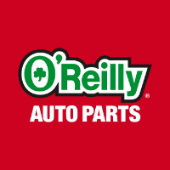-
Welcome to Auto Parts Forum
Whether you are a veteran automotive parts guru or just someone looking for some quick auto parts advice, register today and start a new topic in our forum. Registration is free and you can even sign up with social network platforms such as Facebook, X, and LinkedIn.
Techron Talks-Engine Deposits
-
Similar Content
-
- 0 replies
- 92 views
-
- 0 replies
- 54 views
-
- 0 replies
- 63 views
-
- 0 replies
- 50 views
-
- 0 replies
- 53 views
-
-
Similar Topics
-
By Counterman
Theory can only take you so far when formulating engine oil. Complex modeling is an important step, but it can’t duplicate the magic that happens inside the cylinder. Operating conditions, duty cycles, driver behavior—it all impacts how an engine ages. As it does, deposits form within the engine. The carbonaceous compounds that form on various engine components, including pistons, valve trains, and timing chain covers are a natural occurrence; a consequence of aging that result from the breakdown of oil components at high temperatures, particularly during the combustion process. The highest temperatures occur on the metal surfaces within the engine, where these deposits tend to adhere.
“There are some deposits that are temporary that you can wipe off with your finger, and there are others that can get very thick,” explained Dr. Michael Warholic, global technology director, Valvoline Global Operations. “The bad thing about deposits—and actually there are several bad things—are that, first of all, they insulate and you can’t get the heat out.
“They also cause friction.”
Friction is exceptionally bad, especially if you’re formulating oil. Thick deposits can clog oil passages, restricting the flow of oil to critical engine parts. This leads to inadequate lubrication, exacerbating wear and potentially causing engine failure. Traditionally the role of engine oil has been to slow down engine deposit development, but in concocting its latest engine-protecting blend, the Valvoline team stumbled upon something … surprising.
“We were trying to basically minimize deposits, engine wear, friction and heat, and oil formulation is a balance, so you have to pick and choose what you want it to do,” Warholic explained. “What we didn’t know was before the testing that it would remove and reverse the process–that is something you can’t predict by modeling. Restore and Protect removed engine deposits.
“I had never seen anything like it before, and I have eight years at Valvoline and 16 years at a company that makes the additives used in oil formulation.”
Valvoline’s Restore and Protect is a fully synthetic motor oil that aims at both older, high-mileage vehicles (restore) and new vehicles (protect). While Warholic was tight-lipped about the specific blend of additives within the oil, Valvoline has noted two proprietary technologies–Active Clean, which removes deposits and Liqui-Shield, which prevents deposit formation.
It’s not just marketing—at a recent event, Valvoline put Restore and Protect-cleaned pistons on display. Take a look:
Valvoline validates its oils through industry standard tests such as the GF-6 SP specification, which uses a Chrysler Pentastar engine to measure deposit formation. These tests provide a benchmark for oil performance, ensuring that the oil meets or exceeds industry requirements.
“Exceeds” is the key word. Warholic was quick to point out that these types of tests are merely the baseline within the oil market, not the high bar that oil manufacturers should seek to leap over.
“We want to exceed the API specifications and excel in all categories. Restore and Protect is already GF-7 capable, which is great,” he said.
Real-world testing is crucial. For instance, a Ford Mustang was subjected to extensive testing with Restore and Protect, showing significant reductions in wear and deposit formation. The testing extended to various engine components, including the timing chain cover, oil pan, and valve train, demonstrating the comprehensive benefits of the oil. The team also ran Restore and Protect in a Ford Explorer with more than 500,000. “And we also did a chassis dynamometer test where we put a vehicle on rollers basically and ran it 300,000 miles,” Warholic said. “Restore and Protect actually cleaned up the entire engine.”
For automotive aftermarket professionals, understanding the use of high-performance oils can lead to better engine health, improved engine operating efficiency, reduced maintenance costs and happy customers.
“We’re trying to maximize engine life,” Warholic said. “Vehicles are getting older. The vehicle life on the road is getting older. Vehicles may change owners and engines are going to be running longer. For us, it’s about maximizing engine performance so that you don’t lose fuel economy, you don’t lose efficiency, and you don’t break down on the highway.”
The post
link hidden, please login to view appeared first on link hidden, please login to view.
link hidden, please login to view 
-
By OReilly Auto Parts
link hidden, please login to view View this video featuring the Chevron 65740 - Fuel System Cleaner product and shop other ...
-



Recommended Posts
Create an account or sign in to comment
You need to be a member in order to leave a comment
Create an account
Sign up for a new account in our community. It's easy!
Register a new accountSign in
Already have an account? Sign in here.
Sign In Now